All tires are purpose-built. Walk along the aisles of your local Les Schwab and you’ll see just how different they are, from the tread design to the sidewall. Even the type of tread compound makes a big difference. Before you face the coming winter in a set of all-season tires, it’s important to understand the difference between all-season and winter tires, and what kind you need to safely navigate the rain, snow, ice, and freezing temperatures.
All-season tires are designed for a smooth, quiet ride in most conditions. Many all-season tires do great in the rain and bare pavement year-round. While a set of all-season tires can offer some traction in light snow and the occasional winter storm, they’re not designed for deep snow, ice, and cold weather (when temperatures stay below ~45º F).
Winter or snow tires are designed for prolonged winter conditions, including snow, ice, and slush. The tread compounds in those tires stay softer and more flexible in cold weather. This improves traction, handling, and control when temperatures dip below ~45º F. Additionally, the biting edges of the deep, wide, and jagged tread on snow tires maintain traction in the harshest conditions. A winter tire that includes studs can add even more traction when driving on icy roads.
| WINTER/SNOW TIRES | ALL-SEASON TIRES | |
|---|---|---|
| ROAD CONDITIONS | Snow, ice, rain, and slush ~45ºF and below.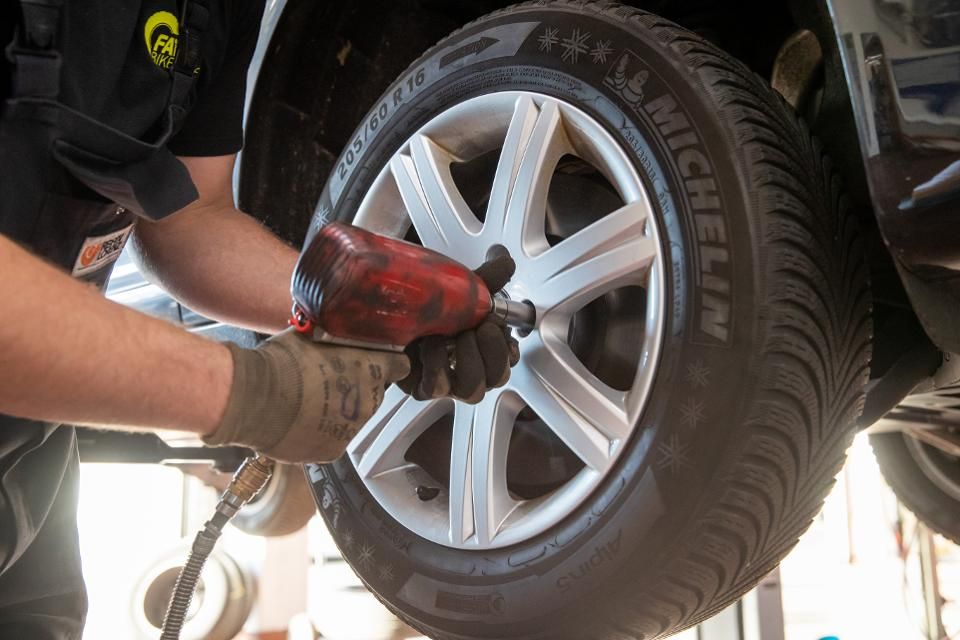 |
Rain, dry, some light snow ~45ºF and up. |
| TREAD | Deep, wide, jagged tread offers better traction in winter road conditions. | Shallower grooves offer comfort and control in most road conditions. |
| RUBBER COMPOUND | Rubber compound stays soft and flexible in cold weather to help with grip. | Rubber compound performs best above ~45ºF, and is designed for longer tread life. |
| SIPING | Winter tires will typically have more siping to maximize grip in winter-driving conditions. | Siping in all-season tires dissipates heat and offers some added traction in wet conditions. |
When you’re on bare or wet pavement, the right set of all-season tires are designed to keep you safely on the road. They even do okay in mild winter conditions. But when the weather worsens and roads are covered in ice and snow, having the right set of winter or snow tires can help you stay in control of your vehicle. That includes stopping. Think about it this way, when going on a long hike, a pair of hiking shoes will help you traverse almost any terrain. Even some snow. But when you get to packed snow and ice, snowshoes are the only way to go. They’re designed for winter conditions.
The answer depends on what kind of winter driving you do. Installing a set of snow tires on your vehicle from November to March can be a good idea. Especially if you’re going to the mountains every weekend or your town gets hit hard by winter weather and stays at or near freezing for months at a time.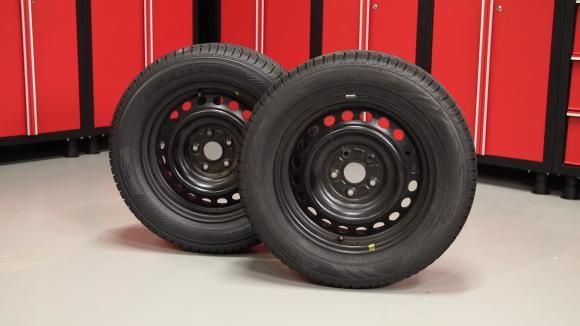
Additionally, doing seasonal changeovers between snow and all-season tires will help extend the life of your snow tires.
Les Schwab Tip: A set of chains that fit your vehicle can help keep you safely on the road when your all-season tires lose traction.
As winter approaches, your local Les Schwab can help you decide if a set of winter/snow tires is right for you, and whether you need studs. Plus, we can help fit your vehicle for a set of snow chains for your next trip into the deep stuff.
Schedule an Appointment
In all regions of Canada, motorists are required by law to equip their vehicles with tires especially designed for winter. Even though traditional winter tires are the most popular option in most provinces, all-weather tires are also legal. Identified with the mountain and snowflake icon, all-weather tires are built to be driven year-long, even during winter.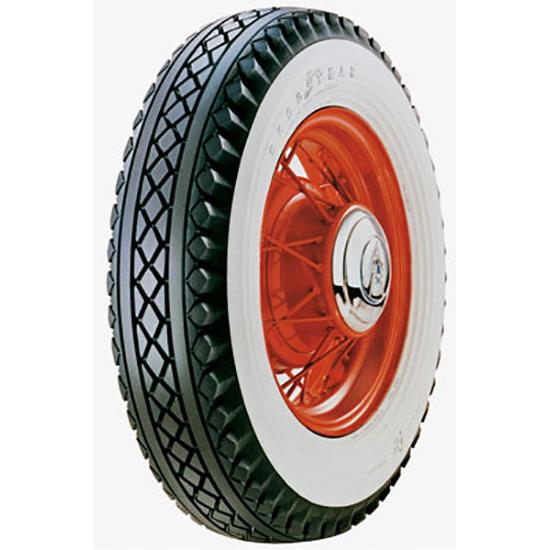
In order to bear this icon, they have to meet a variety of safety standards set by the Tire and Rubber Association of Canada. All-weather tires are not ideal for all Canadian drivers, but they can be a great choice for people living in areas with milder winters.
Are these tires reliable and safe, and do they represent a good investment? Let’s see…
What exactly is an all-weather tire?
Although they've grown in popularity over the past few years, all-weather tires are not ideal for everyone. Even if they're identified with the mountain and snowflake icon certifying that they’ve passed all the necessary safety tests, the fact remains that they are not specifically made for winter.
All-weather tires are stiffer than winter tires, which reduces their grip on ice. As for their tread pattern, it is less aggressive, which provides less traction in snow. In fact, tire experts say that most all-weather tires offer barely 10% more traction than conventional summer tires.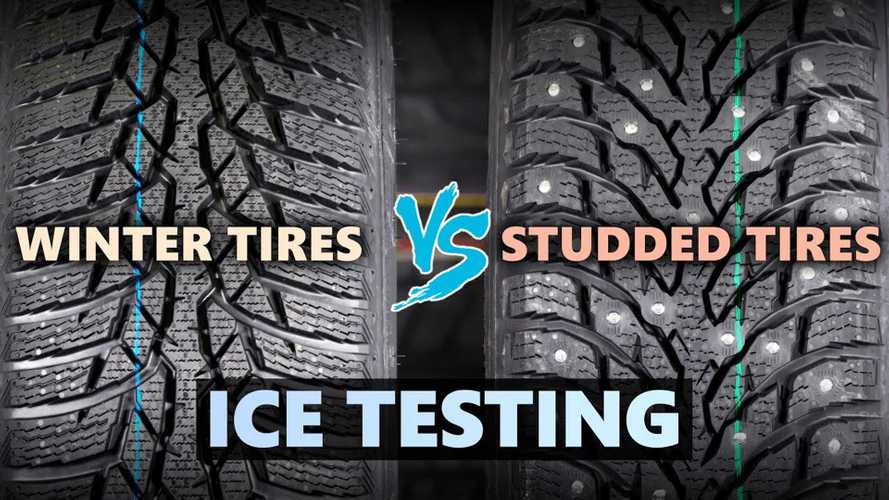 And because their tread compound is not specifically designed for hot weather, it wears out a lot faster during summer.
And because their tread compound is not specifically designed for hot weather, it wears out a lot faster during summer.
Simply put, all-weather tires provide decent performance year-long, but definitely fall short in certain winter conditions.
Why choose all-weather tires?
Generally speaking, people choose all-weather tires to avoid installing and uninstalling their tires every season. Some consider winter tires unnecessary because they live in an area that rarely gets snow. Others just don't want to invest in winter tires. But in fact, wherever you live, there are three important things to consider when choosing tires for winter: your mileage, your driving habits and the winter conditions in your region.
Who are all-weather tires meant for?
All-weather tires are clearly not a great fit for everyone! If you only use your vehicle occasionally or if you can stay home whenever the winter conditions are too dangerous, all-weather tires could be a good option for you.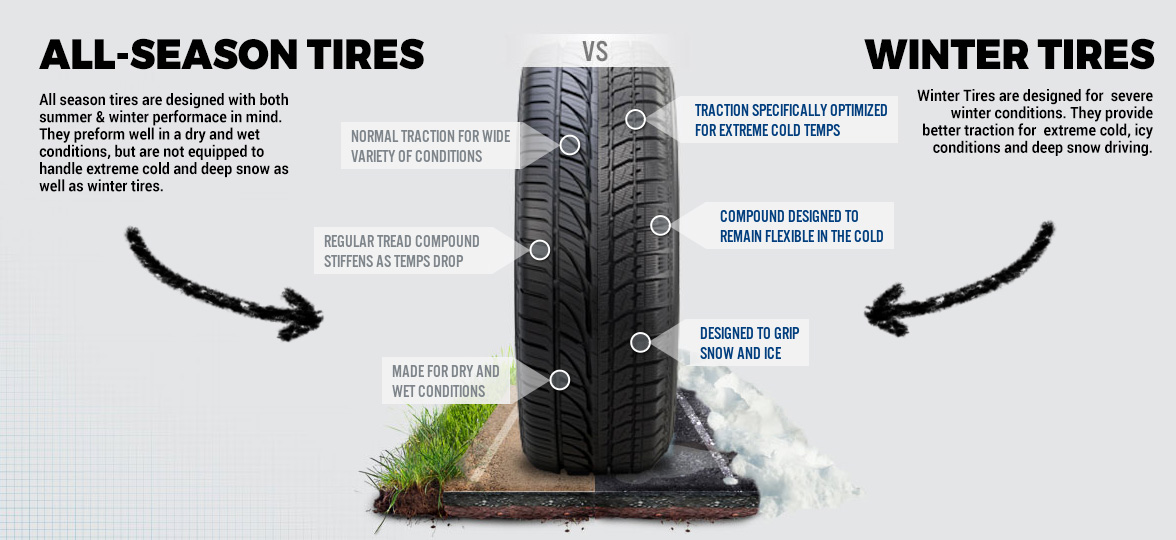 Moreover, if you live in an urban area that does not receive much snow and you don't have a lot of driving to do, you might want to go for all-weather tires. In doing so, you won't have to invest in winter tires and you'll save on tire change twice a year! On the other hand, your single set of tires will wear out faster!
Moreover, if you live in an urban area that does not receive much snow and you don't have a lot of driving to do, you might want to go for all-weather tires. In doing so, you won't have to invest in winter tires and you'll save on tire change twice a year! On the other hand, your single set of tires will wear out faster!
A few of the best all-weather tires on the market
Toyo Celcius - Passenger Cars
Usage: Urban driving
Price: $124.64 (per tire for a 2015 Toyota Corolla - 195/65R15)
The Toyo Celsius bears the mountain and snowflake icon and meets the safety standards set by the Tire and Rubber Association of Canada. This all-weather tire can manage light snow, offers great handling and decent performance year-round. However, if you live in an area that receives a lot of snow, you should not go for the Toyo Celsius.
Goodyear Wrangler DuraTrac - Pickup Trucks and SUVs
Usage: Highway, urban and rural driving
Price: $219. 56 (per tire for a 2015 Jeep Wrangler - 255/75R17)
56 (per tire for a 2015 Jeep Wrangler - 255/75R17)
If you drive an SUV, a crossover or a pickup truck and like going off-road from time to time, you'll probably enjoy the performance of the Wrangler DuraTrac. This all-weather tire is specifically designed to provide good traction, whether it's in mud, snow or on dry pavement.
Nitto Exo Grappler - Pickup Trucks and SUVs
Usage: Highway, urban and rural driving
Price: $341.50 (per tire for a 2015 Ford F-250 - 245/75R17)
The Nitto Exo Grappler is especially designed for pickup truck, SUV and crossover owners. This all-weather tire offers great performance year-round and provides good traction on both ice and snow. You'll drive with confidence with the Exo Grappler.
For all, without exception, car owners during the change of seasons (spring/autumn), it's time to change the shoes for the car. There are long queues in front of the tire fitting points and you often have to sign up right in the morning to get there in the evening.
Good for those who have a replacement set of tires on the disks, threw the wheels and calm. But before you get a winter set of tires, it often takes a lot of time to think. Is it worth it to start this fuss with seasonal tires and is it not easier to buy an all-season? But let's first figure out what kind of beast this is - an all-season tire.
Everyone knows that there are summer tires and winter tires. But the hope for universality still lives among the masses. So, when choosing shoes for their car, many consider tires marked All Season or All Weather on the sidewall (sometimes there is a snowflake and sun icon). But before you make your choice in favor of such rubber, on which you can move around all year round, you should first think hard.
The very idea of this type of tire was born not in our country with its diverse climatic zones, but in European expanses. The idea may not be bad, but there is one BUT. Do not forget that Europe is mainly a country with a mild climate. The French or Italians faint when the air temperature is -10. And if more snow falls in Italy, this is generally a national catastrophe and a red level of danger. And we have? But oranges do not grow in our country and winters come with frosts and good snowfalls.
Why is there a division into summer and winter tires at all? Why all these developments of the optimal tread pattern and the physical properties of the tire material? Summer tires are made of harder rubber, have a smaller tread depth and are designed primarily for good grip on asphalt.
Winter tires made of softer rubber with large sipe block tread and designed for driving on loose snow. Already by the fact that in winter and summer rubber changes its physical properties and behaves differently, we can draw the following conclusion. There is no universal tire that would behave equally well on hot asphalt and on frozen snow. Whatever tread pattern she had.
Velcro rubber
Summer tires become simply "oak" in cold weather and the car on the road becomes like a cow on plastic skis. Winter tires are too soft for hot asphalt, noisy and wear out very quickly. So is the all-season, which combines the elements of two types of rubber. It is not suitable for year-round use on Russian roads. At temperatures below -7 degrees, it already loses elasticity and grip with ice drops.
On the one hand, there are economic benefits of purchasing all-weather tires. It's one thing to buy two sets, or one - the difference is noticeable. If you do not take into account the economic component, then the second reason why all-weather tires are purchased is the presence of light SUVs (a la Niva 4x4).
Tires are often selected for universal use in all seasons and all weather conditions. Moreover, SUVs are often used away from asphalt roads. And therefore, the owners of the VAZ 2121 often consider tires marked M + S (mud and snow) on the sidewall as permanent shoes.
Considered to be the all-rounder for 4x4 driving all year round. However, all-wheel drive is only half the battle. The second half is what the wheels of the car are shod with. It is not for nothing that avid anglers and travelers even in the summer take special mud tires for off-road travel, and not for everyday trips.
In summer, all-weather tires are suitable only for driving to a friend's cottage on a sandy dirt road. Going down the wet hill to the pond - there is already a risk of not getting back. And even worse in winter. Even according to the results of many tests, they remain in the last rows after winter Velcro and studded tires in many respects.
In the snow, the Velcro is much better than the all-season. Even spikes on loose snow cover leave the all-season season behind, and there’s nothing to say about ice. Winter tires show better handling and flotation on almost any road surface (including snow).
If, nevertheless, an off-road vehicle is not used in extreme conditions, but gradually and not quickly drives around the city and in the country (well, a couple of times during the summer for fishing), then all-weather tires can, in principle, be put on wheels.
For the most running Russian SUV, Niva 4x4, the best performances are Kama Flame 205/70 R16, Cooper Discoverer 215/65 R16, BF Goodrich 215/65 R16, Yokohama Geolandar A/T 215/65R16. All these tires combine minimal off-road capability. The tread is quickly clogged with dirt, grass (“washed out”) and is not able to clean itself. So it is desirable to get out on the road only on dry ground. In winter, it feels relatively confident on the first snow. On loose snow porridge (which is not uncommon on urban roads in winter), it quickly clogs and floats. On the snow rolling, the uncertainty in steering and braking is already felt. And in the ice, you definitely need not stick out of the garage, unless absolutely necessary.
I myself have traveled 2 full winter seasons on the AT-shnom Khankuk and I can’t say anything bad. Tenacious on the track, quite tolerable on clean ice, gorgeous on any snow. And in summer and autumn, it’s wonderful by itself, the dirt kneads cool, it gets clogged, of course, but nevertheless drags. I highly recommend if you are looking for an all-season on a Chevrolet Niva.
Widget from SocialMart
So a quick recap. By and large, all-season tires do not exist. The one that is considered as such is essentially summer with careful use in winter (and then, if the temperature does not fall below -7 ... -10) Otherwise, the all-weather tire turns into ice plastic and driving such tires turns into an unforgettable extreme and adds gray hair on the head. So judge for yourself, is it worth it for reasons of economy or for other reasons to risk your safety and the integrity of your iron horse? It’s better to choose a good winter spike and wheels for it. Swapped the wheels and drive easy.
Well, if you still decide to take all-weather tires, then there is an article on this topic - how to choose all-weather tires.
Other tire and wheel reviews: